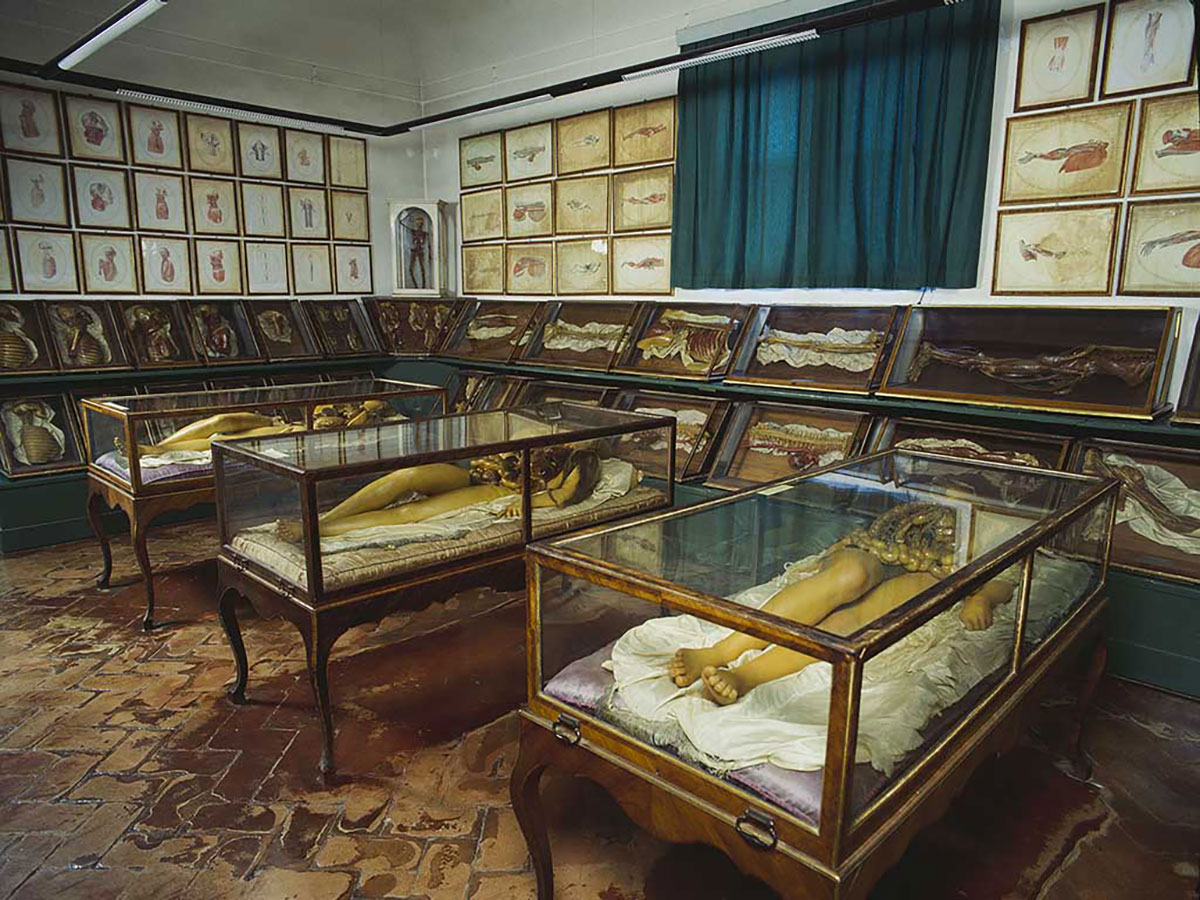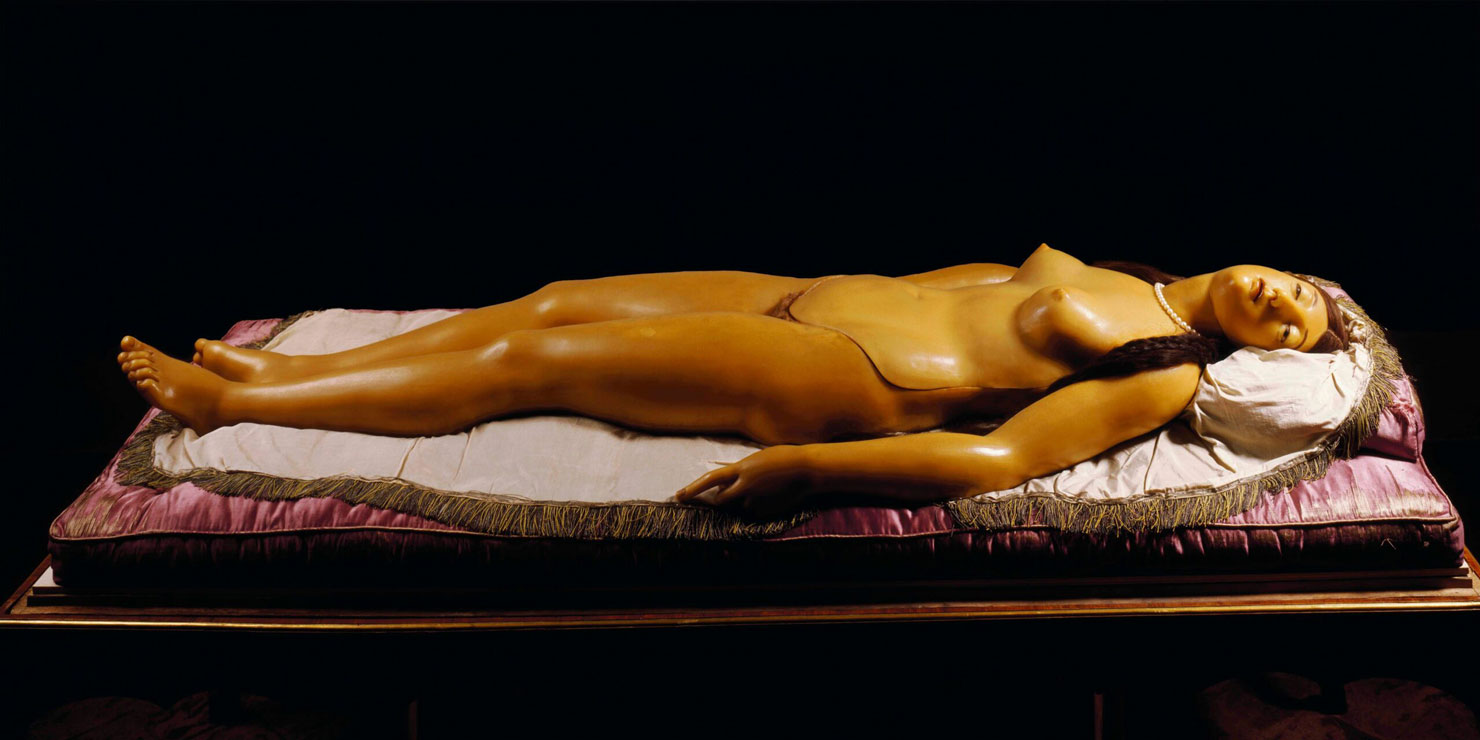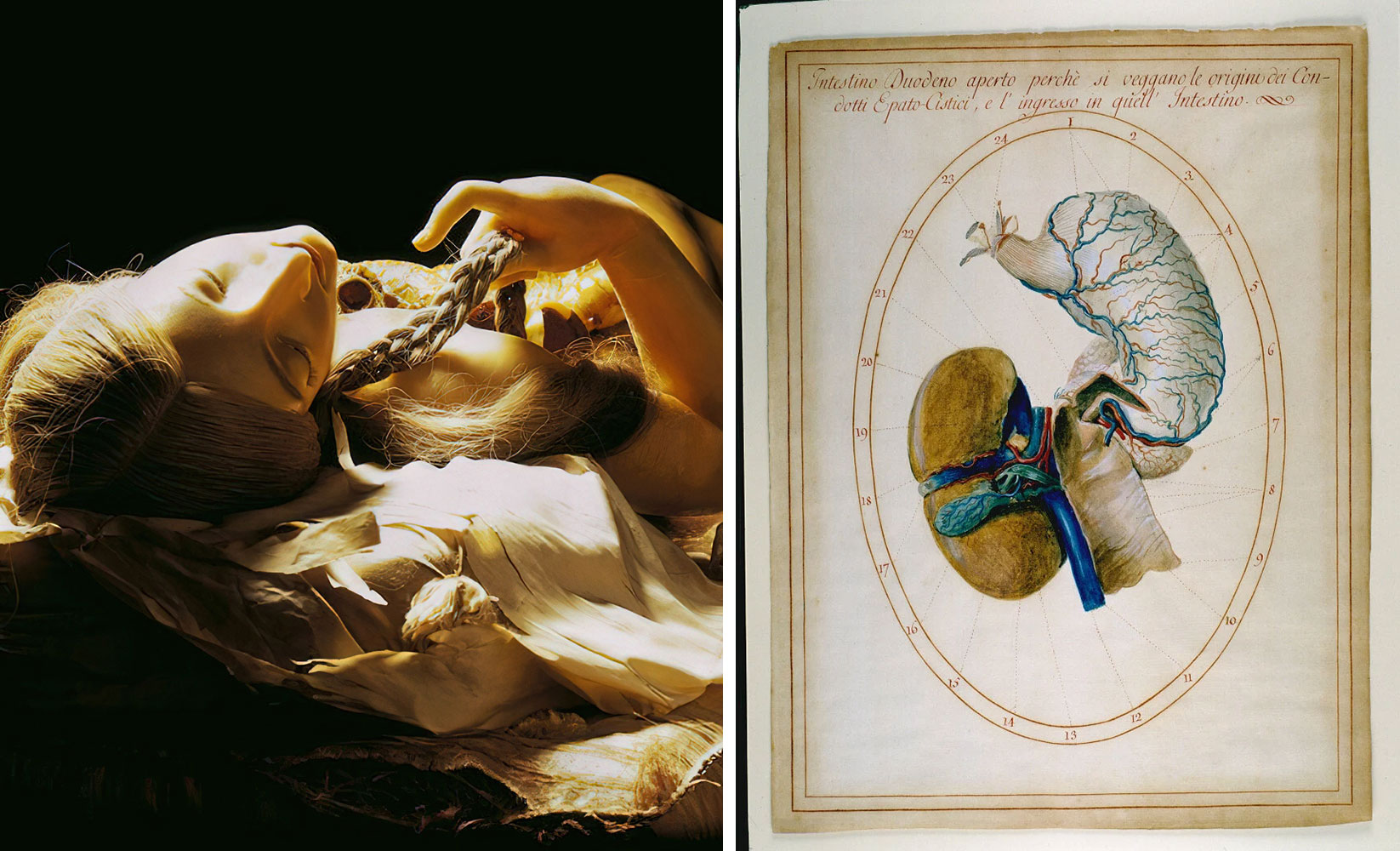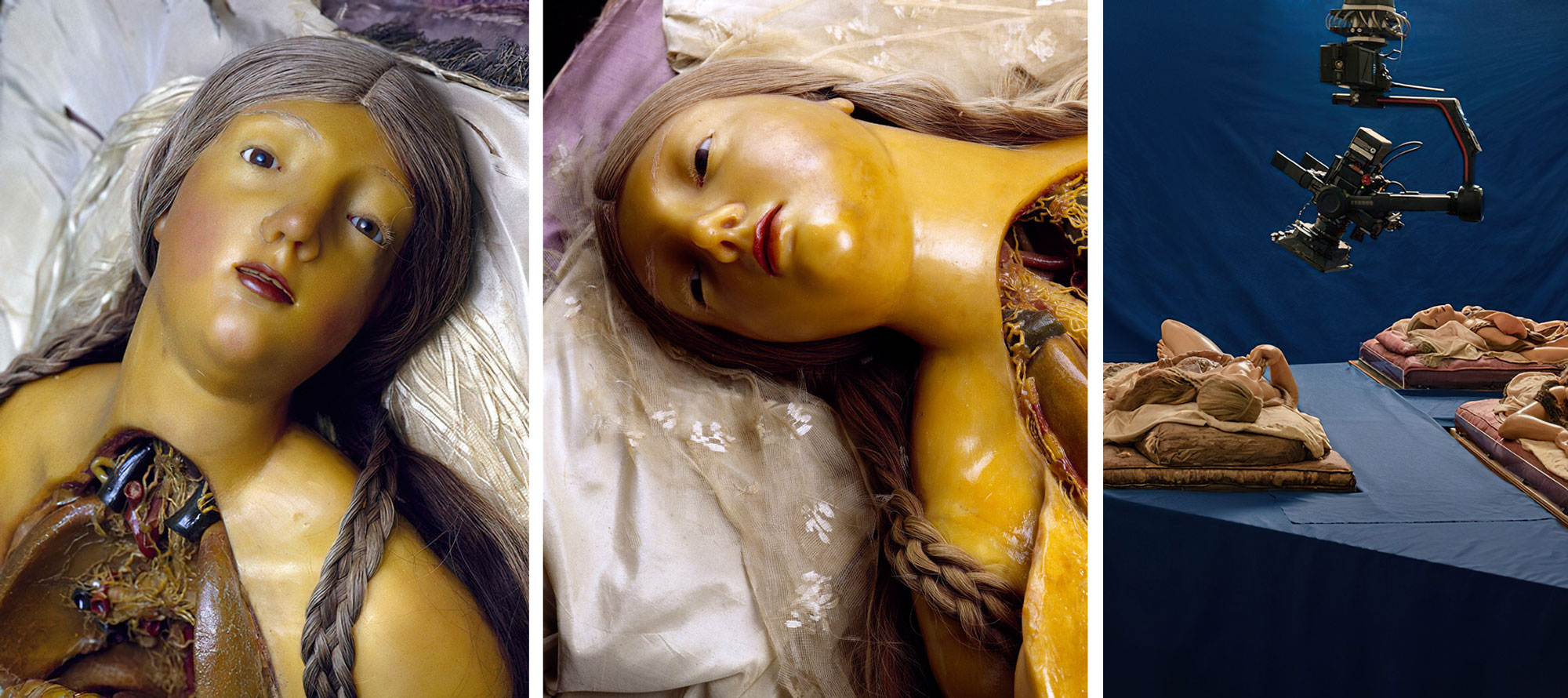PRESENTATION: Cere Anatomiche
 The exhibition “Cere anatomiche” is the latest iteration of a research project with which Fondazione Prada reveals collections of great value from guest museums, offering unexpected interpretations and visions of cultural heritage by including a historical collection in a contemporary cultural context. The project is conceived in collaboration with La Specola, which is part of the Museum of Natural History and Museum System of the University of Florence, and the Canadian film director and screenwriter David Cronenberg.
The exhibition “Cere anatomiche” is the latest iteration of a research project with which Fondazione Prada reveals collections of great value from guest museums, offering unexpected interpretations and visions of cultural heritage by including a historical collection in a contemporary cultural context. The project is conceived in collaboration with La Specola, which is part of the Museum of Natural History and Museum System of the University of Florence, and the Canadian film director and screenwriter David Cronenberg.
By Dimitris Lempesis
Photo: Fondazione Prada Archive
This project “Cere anatomiche” develops in two complementary parts. An exhibition features a selection of thirteen 18th century ceroplastic works from the renowned collection of the Florentine museum, focusing on the female wax models and the way women’s body has been represented for scientific purposes. A new short movie, shot by David Cronenberg at La Specola, is shown in dialogue with the exhibition. In this film the director uses digital editing to introduce four works on view into an alternative narrative. His new short movie explores recurrent elements and themes of his creative vision, particularly his fascination for the human body and its potential mutations and contaminations. The project therefore, takes the form of a double contribution in which the scientific narrative and the artistic one are shaped in two independent set-ups designed by creative agency Random Studio. On the upper floor of the Podium, the main exhibition space of Fondazione Prada, La Specola’s waxes are displayed with a scientific museum-like approach. In contrast, on the ground floor, the same works will merge with the director’s imagery and become the protagonists of an enigmatic process of metamorphosis. As stated by David Cronenberg, “The wax figures of La Specola were created primarily as teaching tools that unlocked the mysteries of the human body for those who could never access the relatively rare corpse dissection sessions of universities and teaching hospitals. But in their effort to create certain partially dissected full figures whose body language and facial expressions did not display pain or agony, did not suggest they were undergoing torture or punishment or even surgery, they happened to produce living characters who seemed to be in the throes of ecstasy. It was this startling choice on the part of the sculptors of these figures that captured my imagination: what if it was the dissection itself that induced that ecstasy, that almost religious rapture?” “Cere anatomiche” features four reclining female figures three from Lymphatic System section, one from Obstetrics and nine detailed waxes on gestation, also from Obstetrics, produced in the Age of Enlightenment with didactic purposes, and a series of seventy-two exhibition copies of anatomical drawings gathered in nine vitrines. The Milan exhibition includes one of the most relevant works of La Specola’s collection, the so-called Venus, a rare model with detachable parts famous for its beauty. Through his short movie, David Cronenberg will provide an alternative gaze on the four female wax models on display, liberating them from their academic function as medical demonstrations and educational tools. His film will reveal the vivid and unexpected dimension of the ceroplastics, so far known for their static and severe nature, to generate a plurality of new emotional responses, intellectual impressions, and intense feelings.
Photo: General view of Room XXIX, “La Specola” Museum, Museum of Natural History of the University of Florence. SMA, Sistema Museale dell’Università degli Studi di Firenze, ph. Saulo Bambi
Info: Fondazione Prada, Largo Isarco 2, Milan, Italy, Duration: 24/3-17/7/2023, Days & Hours: Mon & Wed-Sun 10:00-19:00, www.fondazioneprada.org/



Right: Anatomical drawing, 18th–19th century. “La Specola” Museum, Museum of Natural History of the University of Florence”SMA, Sistema Museale dell’Università degli Studi di Firenze, ph. Saulo Bambi

Right: Clemente Susini and Giuseppe Ferrini, Wax Modeling Workshop of the Imperial and Royal Museum of Physics and Natural History, Reclining female statue, known as “Venus”, 1782. “La Specola” Museum, Natural History Museum of the University of Florence SMA, Museum Network of the University of Florence. Photo Saulo Bambi

Right: Backstage image from the shooting of David Cronenberg’s film, Museo La Specola di Firenze. Ph Flavio Pescatori, Courtesy Fondazione Prada

